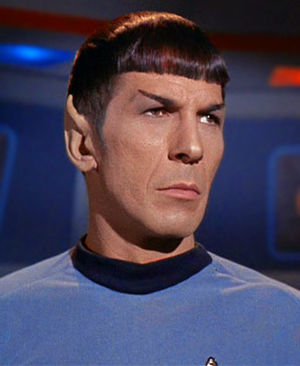Difference between revisions of "Cross-species matings"
Jump to navigation
Jump to search
(Removed "Unwillingness", reasons in Discussion) |
|||
| Line 1: | Line 1: | ||
[[Image:Spock.jpg|thumb|right|Spock: The first of many Star Trek hybrids.]] | |||
In a few [[science fiction]] series (the [[Star Trek]] franchise being the most notable), humans can mate with extra-terrestrial species and produce healthy children. This is, of course, absolutely ridiculous; species are ''defined'' by their inability to mate and produce fertile offspring. Even taking into account the possibility of [[panspermia]], a human would have more in common genetically with a daylily than with an extra-terrestrial. | In a few [[science fiction]] series (the [[Star Trek]] franchise being the most notable), humans can mate with extra-terrestrial species and produce healthy children. This is, of course, absolutely ridiculous; species are ''defined'' by their inability to mate and produce fertile offspring. Even taking into account the possibility of [[panspermia]], a human would have more in common genetically with a daylily than with an extra-terrestrial. | ||
Revision as of 13:14, 12 July 2008
In a few science fiction series (the Star Trek franchise being the most notable), humans can mate with extra-terrestrial species and produce healthy children. This is, of course, absolutely ridiculous; species are defined by their inability to mate and produce fertile offspring. Even taking into account the possibility of panspermia, a human would have more in common genetically with a daylily than with an extra-terrestrial.
Cross-species mating in Star Trek
Notable products of cross-species matings include:
